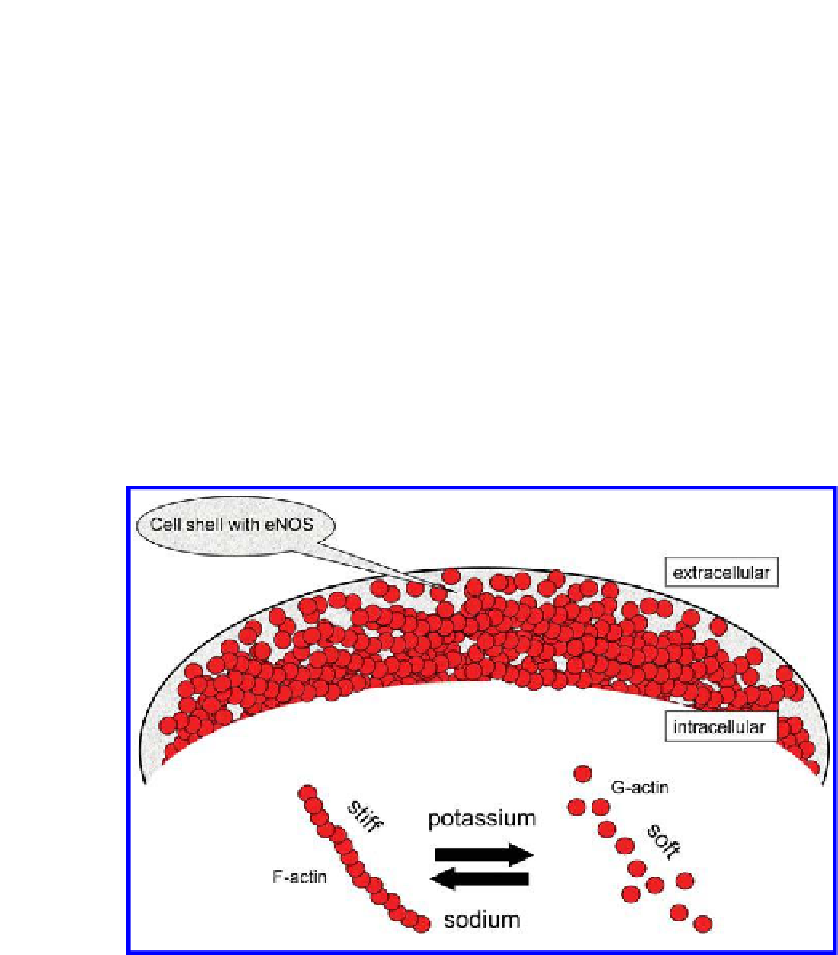Biology Reference
In-Depth Information
concentrations (>5.5 mM) usually measured in the blood plasma frequently
occur as a severe symptom associated with kidney disease. However,
“local” potassium concentrations up to 15 mM are absolutely normal in
the interstitium of muscle during physical exercise
27
and during increased
neuronal activity in brain.
28
As a functional consequence of swelling and
softening, vascular endothelial cells undergo more pronounced shear-stress-
mediated (reversible) deformations which result in enhanced NO formation.
6.2.5
The “Solaon-Gelaon” Hypothesis
Endothelial cells are subjected to large changes in cell shape (e.g. during
dilation/constriction of blood vessels, particularly with each contraction of
the heart) and can adjust best to such alterations if the deformability (physical
compliance) of the cells is high.
Figure 6.13.
Concept of how sodium and potassium control the dynamic cortical zone
(cell shell).
At least two linear slopes have been described in the indentation curves,
slope indicates a low stiffness and is limited to the submembranous cortex
of the cell (cell shell). Obviously, there is a luidic layer beneath the plasma
membrane, which is highly dynamic in terms of thickness and viscosity. A















Search WWH ::

Custom Search